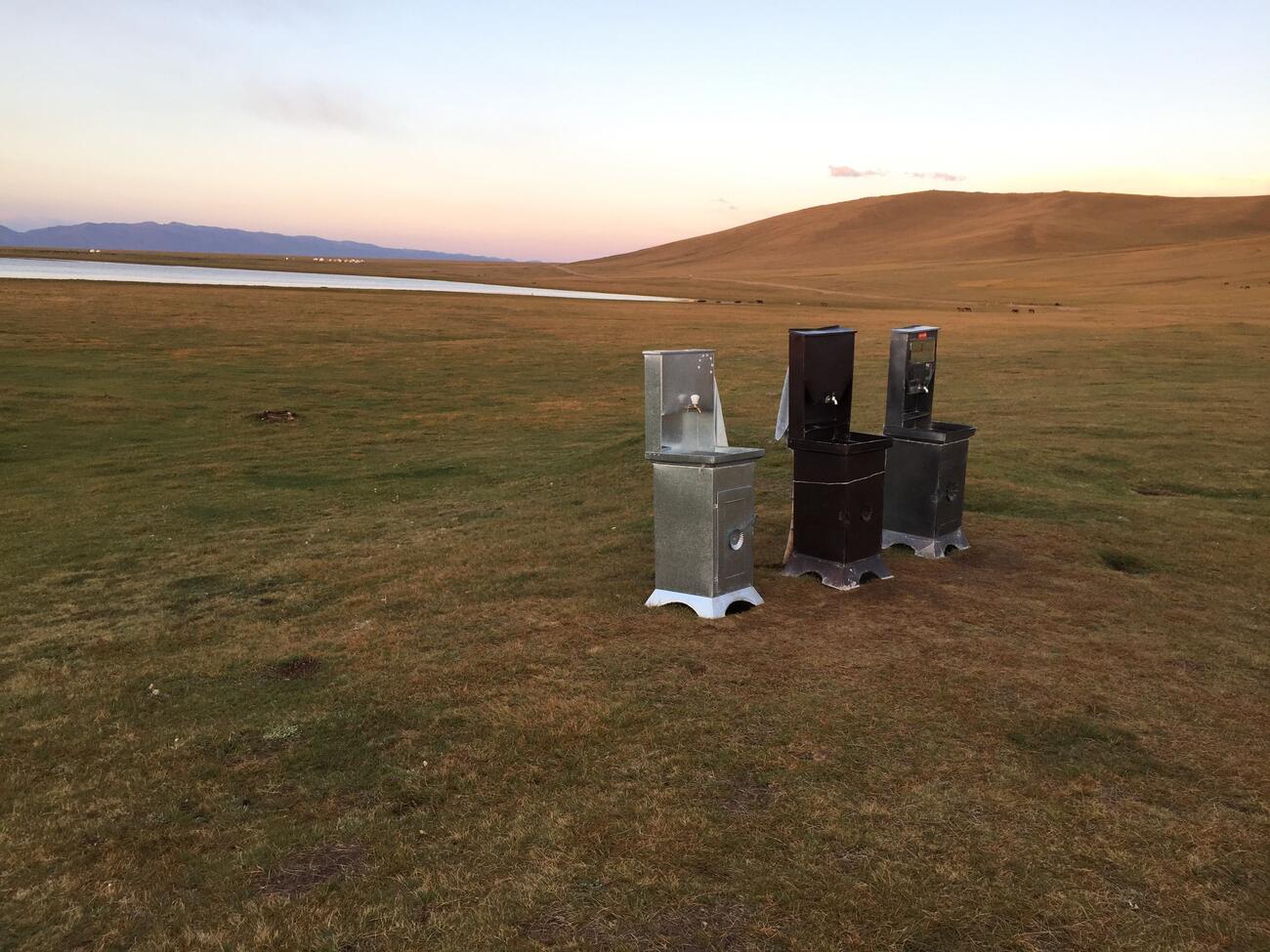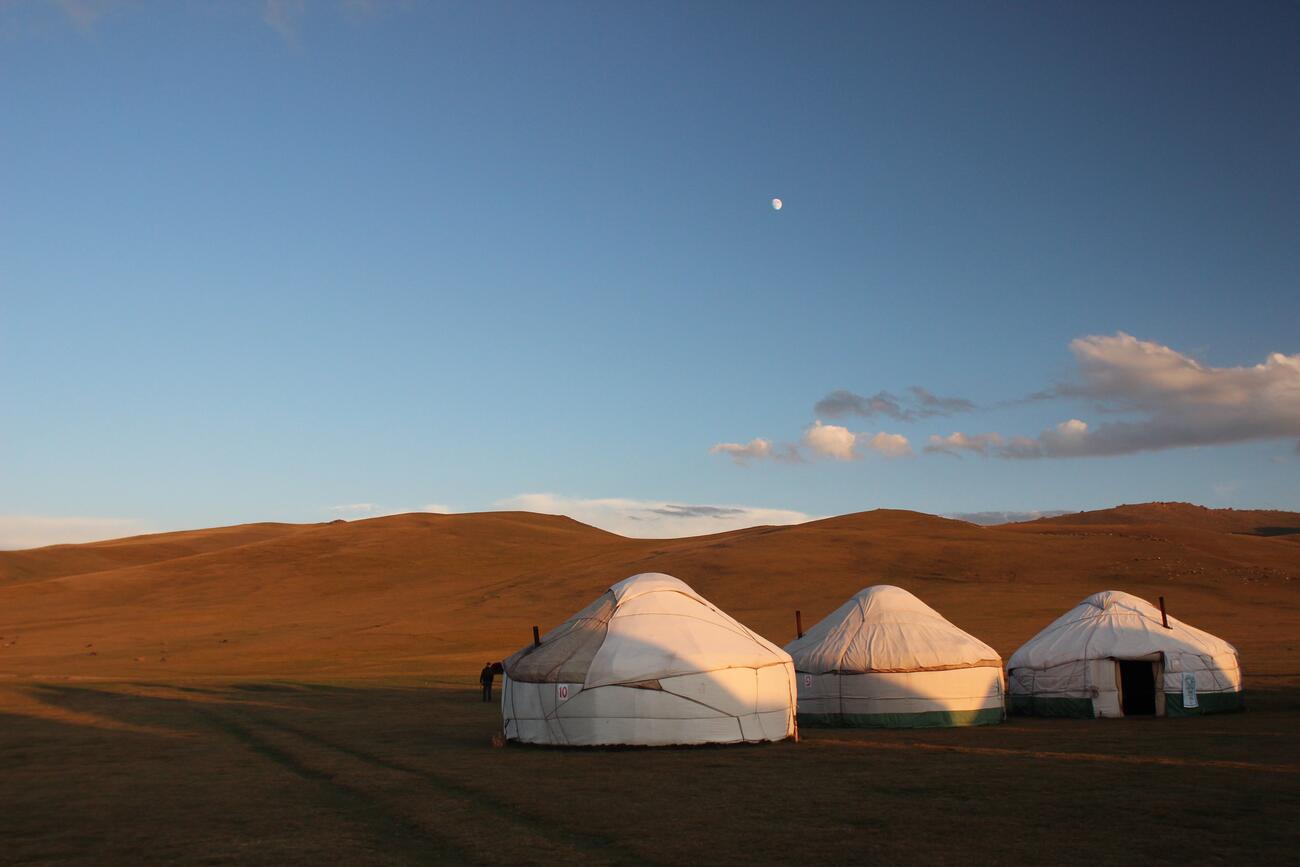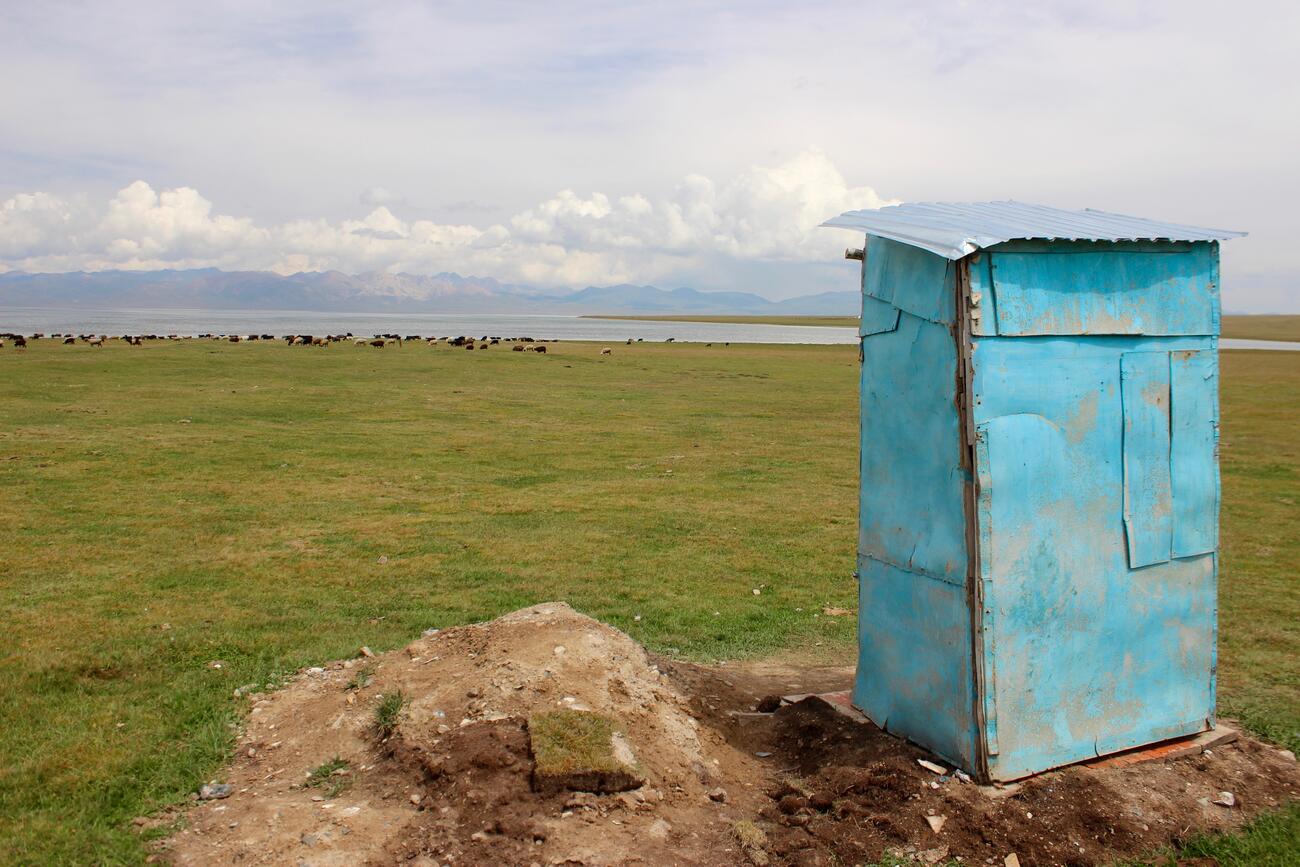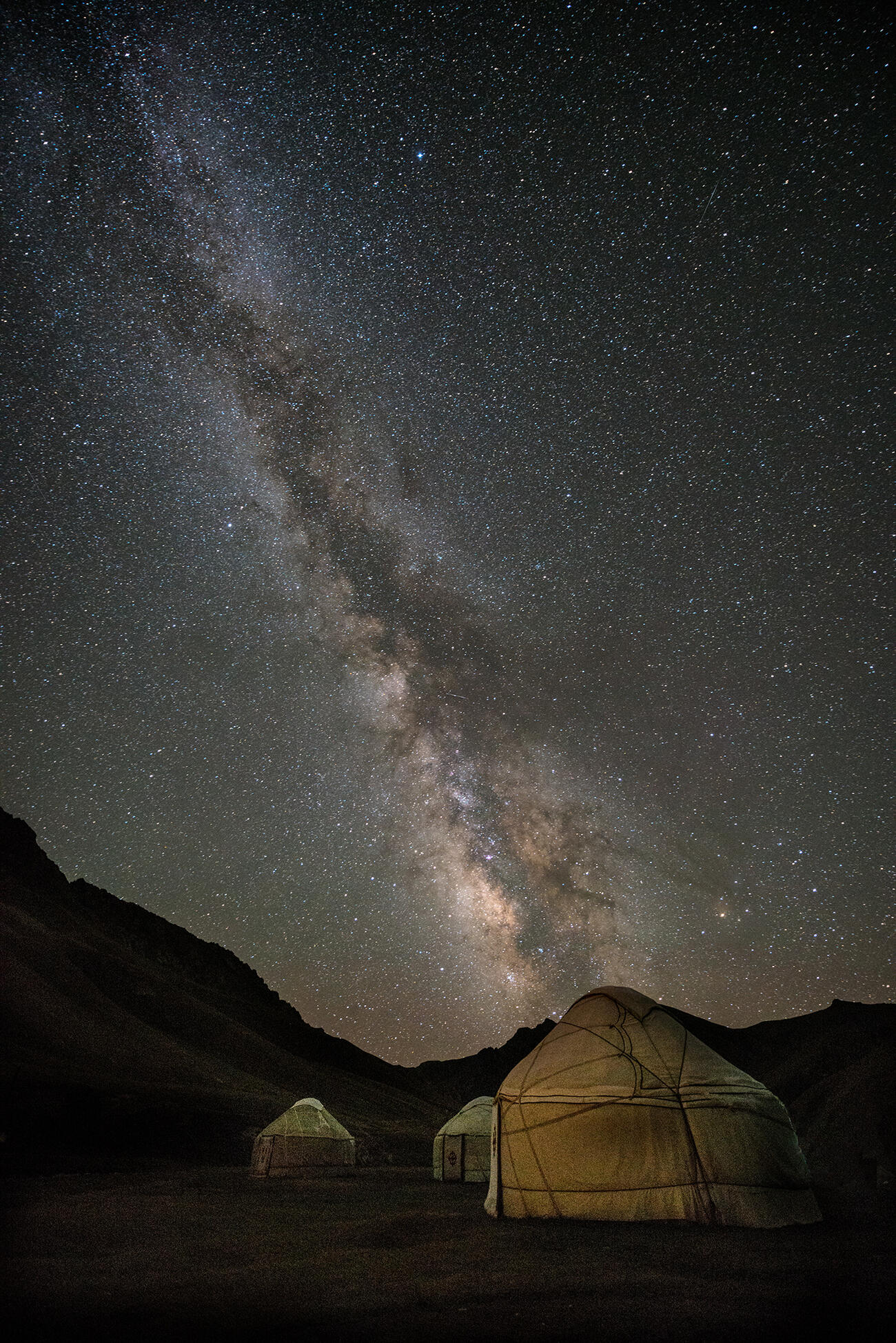Wild Frontiers' Michael talks about what it's like staying in a yurt camp in Central Asia.
If you want to experience staying in a yurt, the two best destinations to try are probably Mongolia and Kyrgyzstan. On our tours to Kyrgyzstan, Wild Frontiers uses camps in Son Kul, set right on the shores of the beautiful lake, and Tash Rabat, perfectly located by a stream, in a valley surrounded by mountains and just five minutes' walk from the ancient caravanserai of Tash Rabat. Here you are right amongst the semi-nomadic locals, who you will see herding goats and riding horses against a backdrop of mountains and huge skies. But what about the yurts, what is staying in one actually like?

Camping in a yurt has romantic connotations, but a word of warning - the reality in this part of the world is that whilst it is a great adventure, it is a fairly rustic experience.
Yurts: the good and the bad
- The toilets are of the long-drop variety – think Glastonbury.
- There are rudimentary wash stations (see above) for brushing your teeth and washing your face in the morning.
- If you want a full-body wash, then it’s the 3,000m altitude lake for you (incredibly refreshing, I would recommend it).
- Generally, around 4-6 people will share a yurt.
- If travelling on one of our small group tours, there will usually be a boys' yurt and a girls' yurt.
- Beds are arranged in a circle around the yurt and the few other mod cons total a doorway, a stove and a carpet for the floor.
- Wifi? Forget it, there isn’t even electricity.
- But there is an air-conditioning unit - a small cover for the roof which can be removed during the day by untying a rope and swinging it over the yurt to create a skylight.
- Whilst you are having dinner in the evening the camp staff will go around all the yurts and light the stoves, making them nice and toasty for when you retire to bed.
- There are no trees around here for hundreds of miles, so dried goat dung is used for fuel. Fuel is a very precious resource here.
- Once your stove burns out, at around 4 am, the yurt will start to get cold.
- You are provided with plenty of snug blankets, but it is recommended to bring thermal underwear. Wear long johns and a thermal vest, and with the blankets provided, nothing can touch you.
- Oh and a woolly hat.
- Beds are hard. A few vodkas before bedtime is recommended.
- Those that get caught short in the middle of the night will be reluctant to get out of their nice warm bed and face the outside toilets. For this reason, head torches are an essential item.
- If you do have to venture out in the middle of the night, remember to look up - you'll get the most incredible view of the night sky, including the Milky Way and the odd shooting star.
- Early mornings are cold - on our second morning, there was frost on the outside of our yurt. A hot bowl of fresh porridge and some tea made by the family looking after the yurts soon fixes this.
- Once the sun rises things warm up quickly and daytime temperatures are pleasant in summer.
If the above sounds unappealing let me say that the yurt camps were the absolute highlight of our two-week trip to Kyrgyzstan and Uzbekistan for everyone in our group, who ranged in ages from 27 to 75. The camaraderie of sharing a yurt, the beautiful surroundings, the authenticity and yes, the romanticism of the experience, more than made up for any hardships. After some initial shock, after four nights of staying in yurts, we were all reluctant to leave for the relative luxury of guesthouses. With no internet connection or even electricity, it is also a wonderful way to unwind.



Kyrgyzstan is the most beautiful country I have visited, and for lovers of mountain scenery and the great outdoors, it can’t be beaten. View our Kyrgyzstan holidays.
